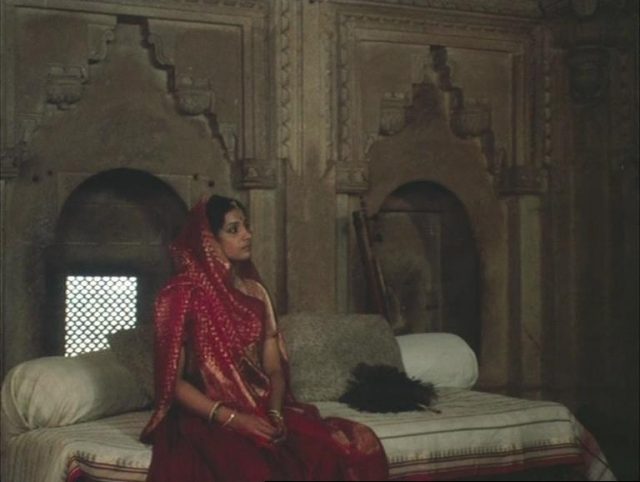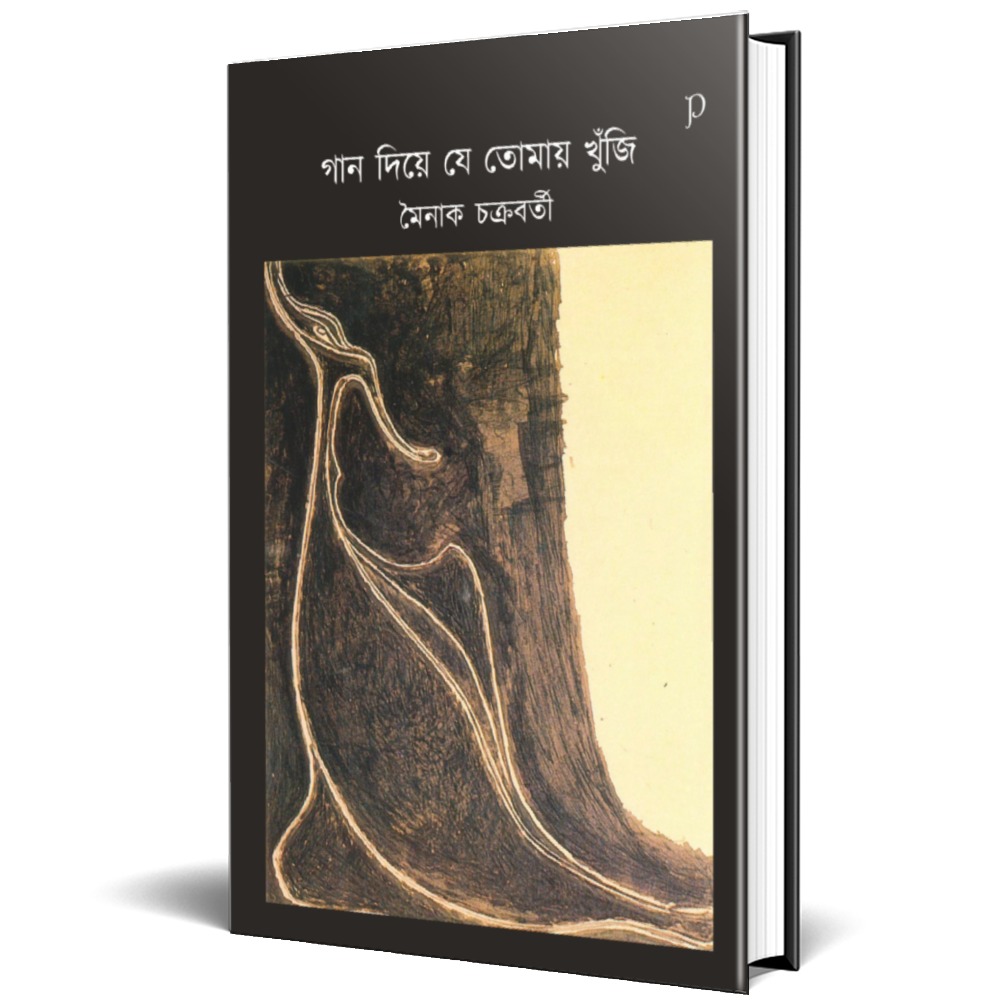Treasure Trove of Classical Music in Modern Indian Cinema by Prithvijeet Sinha
It all begins with our recent exposure to the stirring musical ambience revived by Chaitanya Tamhane's THE DISCIPLE. It is a cinematic work that has percolated to the cultural consciousness in its painstaking examination of artistic pursuit, making that timeless issue echo throughout the world. But above narrow definitions of any given category, it has liberated viewers to capture the essence of classical Indian music canon.
For this afficianado, the film was a point of reference to remind viewers and readers of the treasure trove of Indian filmmaking that has dabbled with classical music and dance to exemplary degrees. However, there's a clear pattern marking most of them. They are different from the mainstream, often relegated to being arthouse classics or left-field works boasting of commercially successful performers. It is a welcome parallel to the state of classical arts in general; it is hence not just a case of making the issue one of selective taste or classes alone.
Fact remains that classical music remains to be a huge part of our cultural understanding of the ancient gifts which we have miraculously preserved to this day and age. Indian cinema, a more dynamic and versatile entity than we give it credit for, has beautifully enabled that cultural revival through the decades.
Hence, the idea behind this rich treasure trove brings me to one of the most underrated works that pays tribute to the beauty of Indian classical singing like very few can.
DANCE OF THE WIND(1997), an international co-production, is a labour of love by its writer – director Rajan Khosa to his land and its people. In its prologue, he beautifully lays down its purpose of paying tribute to the ancient Guru – Shishya parampara ( teacher to disciple tradition) that has been constructively ingrained in Indian annals of recollection and exemplification. That is what makes the sentiment personal and relevant, at a cultural crossroad where those values are rapidly eroding and self- centered individualism has overtaken the counsel of elders and their overall wisdom per se.
DANCE OF THE WIND is purely in the Hindustani language despite its title being in the universal English one and scores brownie points with me as it respectfully recreates the painstaking aura of classical music while painting a restrained portrait of an enduring mother – daughter bond ( Kapila Vatsyayan and Kitu Gidwani, the former being a true luminary of the Indian art form for decades)
This bond has thrived within the Guru – Shishya canon, as both are singers of the traditional mould. The younger one carries the responsibility and rightful duty of upholding her musical tenets, in the wake of her ailing mother’s grim forecast for the future. Practice (riyaaz) and fidelity to those bedrocks define her very being.
So it’s natural that her mother’s death leaves her doubly bereft as she was both her parent and teacher. Life under her comforting shadows was stable and full of forbearance. This void exposes her fragility. Watch the scene where she stops singing in the middle of a concert and henceforth loses her will to sing. The loss leaves her in an almost comatose state as far as her artistic pursuits go.
**
DANCE OF THE WIND is shot in and around monuments, down to the simple but elegant home where the protagonist stays in and the saris that she wears, further buoyed by every emotion encapsulated within the classical recitals. So it's characteristically Indian in its interiors and style . But at its core, it’s a film about loss, grief and the challenges of finding an emotional shelter once our only true anchors leave the mortal realm.
A varied touch is given by way of one of the protagonist’s students who sings with her but is equally perched atop essentials of modernity, shown to be smoking and hanging out with friends at a posh restaurant. But she also demands no judgements from traditional purviews.
Kitu Gidwani, an actor of rare grace, is understated here, true to the nature of her upbringing and personal nature within this setting . In the scene where she loses her bearings in the market searching for the little girl whom her mother gave her sacred thread to, she is phenomenally adept at portraying her rudderless existence. Her bond with the poor girl who possesses a gift of singing is like the connection forged between two solitary ghosts, left with no guardian to look after them. Both are mystified by the enigma of the elderly gypsy who once trained her mother and now lives with the girl. It’s uniquely realized.
**
A cinema of Loneliness with no definite closure, DANCE OF THE WIND is an underrated gem that deserves to be steered towards discussions among dedicated cinephiles as it’s the work of one such soul ( that is its maker)
It’s made with heart and great sensitivity addressed towards its concerns. It is ultimately imbued with a sense of aesthetics we have yet to see of late.
I mean its prominent use of the theme vocal cue and the strains of 'Maharaja' sung by the mother and daughter duo while practicing are etched in my mind.
***
It's my utter privilege then to close this essay by sharing two works of art that are quintessentially drenched in the aesthetics of Indian classical music. Those two masterpieces are SIDDHESHWARI and KHAYAL GATHA that share the same year of release (1989) as also leading star Mita Vashisht, one of the most consummate artists of our times. They are also directed by two artistic visionaries in MANI KAUL and KUMAR SHAHANI respectively.
Oh, it was such a blessing to behold their simultaneously impressionistic(signifying visual impression of moments, especially influenced by light) and expressionistic( reliant on interior thoughts within a work of art) content. It made sense to have this unique amalgamation capture successfully the brilliance, mystique, grasp for perfection and majestic sprawl of classical arts in all their glory.
SIDDHESHWARI is a non-traditional documentary on the life of the great vocalist by the same name. By using myths, paintings, close-ups, some of the most beautiful shots of Benaras and a fluid visual palette, this episodic, vignette style is a treat for the senses, set to the enchanting strains of thumris (an evocative form of singing, celebrating love and life) that the doyenne of the title excelled in. Static shots too capture the stillness of moments in her young and adult life, with an eye for detail amidst the wandering soul's search for meaning, on the landscape of the world's most ancient city.
Some of my favourite scenes are of the interior spaces of havelis and ghats captured from towering heights and angles, the image of the mythic apsara said to originate the thumri form reclining atop a boat making its way amid a mass of men in the river, replicating its divine effect, Mita Vashisht immersing herself in the Ganga, free from raiments or worldly expectations, her singing performance at a royal household and of course, the individual use of actual recitals by practitioners of the form. As also that one shot where seated in a canopied boat, she reminisces about decaying standards of patrons as against royal afficianados of yore who sustained the arts and a finer appreciation for it.
In the last half an hour, the reenactments make way for one of the most stirring images within the body of this work. Mita, in a meta moment, watches with awe and silent appreciation as multiple studio television sets play images of the actual SIDDHESHWARI DEVI, in rapt communion with her gifts while singing. It goes without saying that Mita Vashisht is the heart and soul here, with her arresting presence and antecedent in classical singing aiding her commitment here as on Khayal Gatha.
**
KHAYAL GATHA is another visual marvel that lays claims to the journey of ages informing the Khayal form( which as the name implies is more intent on imagination, thought and hence improvisation)
Its love for architecture, moods, imagery is drenched in the ras(aesthetic flavour) of a creative zeal that arises from the depths of the soul. Particularly impactful is its emphasis on the saga of King Baaz Bahadur and his bride, Rani Roopmati of Mandu, two legendary figures, capturing the musical influence of their immortal love for each other. The imagery that gets a rich treatment from K. K. Mahajan's camerawork caresses every nook of nature, from the play of light and shadow on desert dunes and within palaces to rivers and an overcast sky. Even the transition to the Heer-Ranjha tale is poignant and ruminative.
KHAYAL GATHA incorporates the evolution of singing and dance throughout Indian history to eschew formal narrative, in favour of an awakening to the legacy of our past, preserved in the present, like in this tableux form of storytelling. Mita Vashisht is again excellent as Roopmati here, covering thirty minutes of pure bliss within the running time.
***












Comments